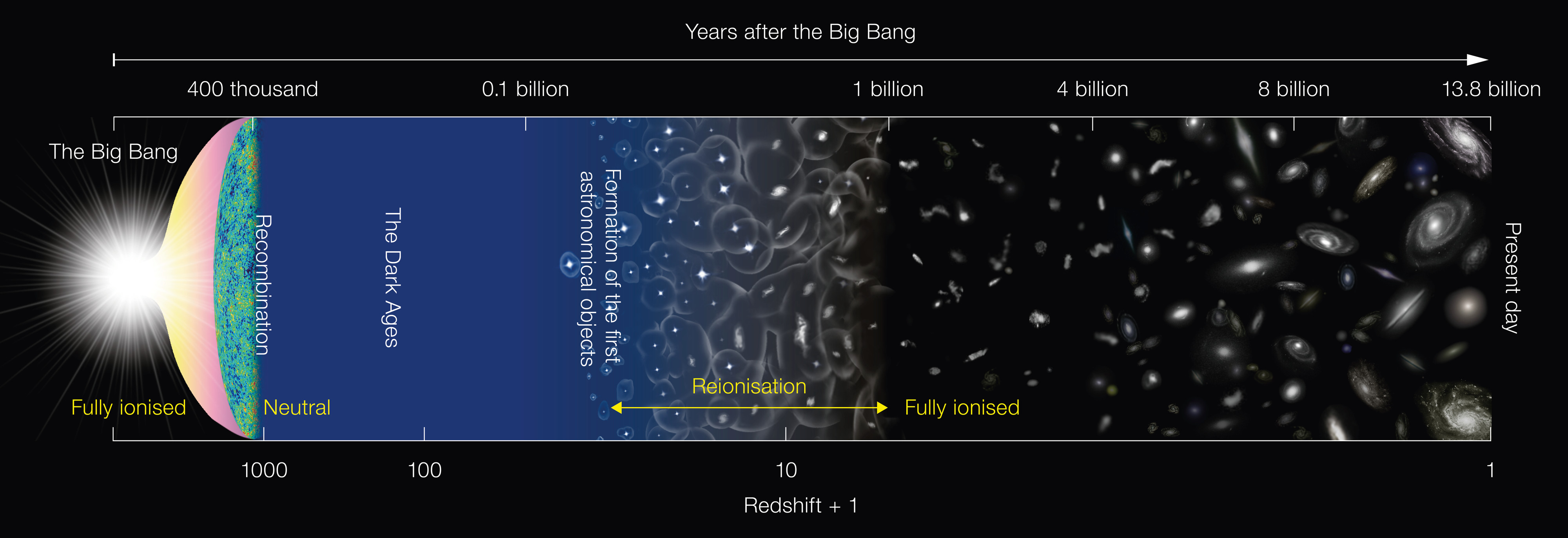Reionization
When and how did the universe's final phase transition happen?
The universe underwent a phase transition from predominantly neutral at recombination (z∼1100), to almost fully ionized by z∼6. We have not identified the sources of ionizing photons – though the most likely candidates are young stars in galaxies.
Lyman alpha emission from star-forming galaxies is absorbed by neutral gas, so observations of Lyα in high-z galaxies can constrain the timeline and morphology of reionization. I developed a new Bayesian framework for directly inferring the neutral hydrogen fraction in the IGM from Lyα observations. I led the design, reduction and analysis of a ESO VLT Large Program with KMOS (PI: A Fontana) to measure the reionization timeline from upper limits of Lyα emission at z > 7.5 for the first time. With JWST we can now extend our understanding to the earliest stages of reionization at z>10!
Recent projects in my group include:
- Developing methods to estimate the sizes of ionized bubbles (Lu+25)
- Improving our understanding of Lyα emerging from galaxies, before it is attenuated by the IGM (Prieto-Lyon+25)
- Measuring the ionization state of the IGM at z>8 using galaxy damping wings, possible for the first time with JWST (Mason+25)
- Inferring the distribution of the ionizing photon escape fraction from galaxies (Kreilgaard+24)
